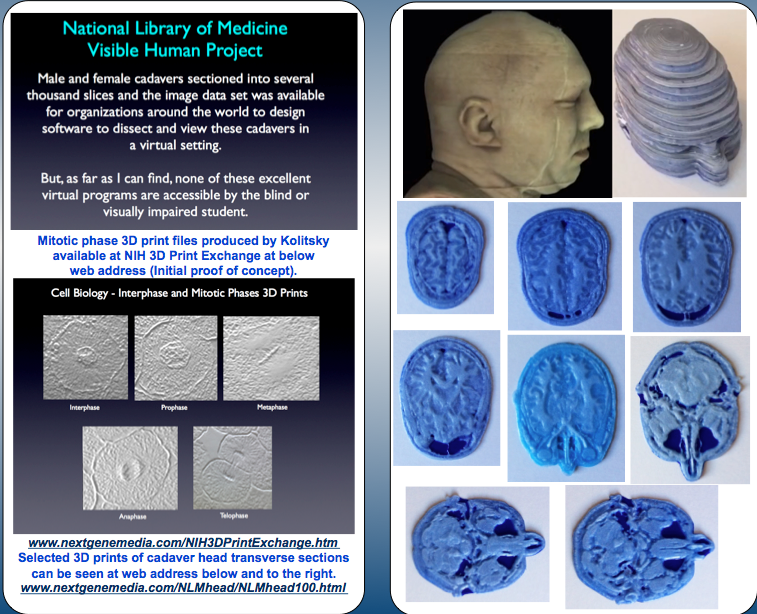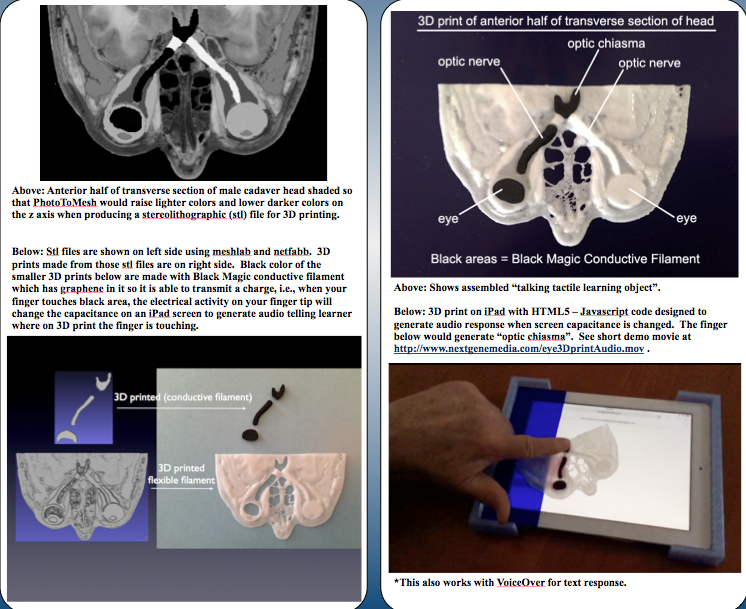
In 1995 - 1996, the National Library of Medicine published a rich data set of images obtained from sectioning a human male and female cadaver. The several thousand images for each cadaver were made available for institutions and organizations worldwide to design software to dissect and view these cadavers in a virtual environment. A number of excellent virtual programs were developed and are in use today. But none of these high quality interactive virtual programs are accessible to the blind or visually impaired student interested in studying human anatomy. For this reason, a long term project was begun to make 3D printed tactile learning objects with the transverse sectioned cadaver images so that blind or visually impaired students can also study what sighted students see when using the virtual programs developed from the Visible Human data set. As an initial test of this idea, a series of representative slices from the male cadaver were made into 3D prints using PhotoToMesh software and a consumer grade 3D printer (MakerBot Replicator 2) and can be seen at NLM 3D printed slices.
In order to make a more rich learning experience using touch, a strategy was tested which employed using conductive filament (Black Magic) in regions on the 3D print that were important for identifying a particular anatomic structure or area. When these 3D prints incorporating conductive filament were then laid on the surface of an iPad, they could now provide a way for the electrical charge on a finger tip to be conducted to the surface of the iPad causing a change in capacitance which could then be programmed for audio feedback. An example of a talking tactile learning object can be seen at audio feedback 3D print.
Left and right images of a poster to be shown at the American Association of Anatomists regional meeting at Western University in London, Ontario (May 30, 2015) can be seen below.
Left Side of Poster:

Right side of poster:

This current approach 3D prints separately the pieces that are conductive from the rest of the flexible filament because the MakerBot Replicator 2 3D printer has only one extruder. But future 3D prints will be made simultaneously using a FlashForge dual extruder 3D printer making production of a talking tactile learning object a one step process.
For more information, contact Mike Kolitsky, Ph.D. at mkolitsky@nextgenemedia.com